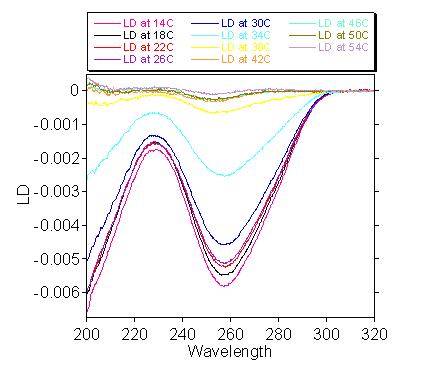My Research
Linear Dichroism
Linear Dichroism (LD) involves the use of light, polarised in the parallel and the perpendicular from the orientation axis of the sample. The absorbance in both of these directions is then measured . LD is reported as the absorbance of the parallel polarised light minus the absorbance of the perpendicular polarised light.
LD = A// - A┴
The angle of orientation of DNA is known to be around 86o and this makes LD useful when analysing DNA binding ligands as it gives information, such as where the ligand is binding (major or minor groove or neither). A shear flow method is adopted when using linear dichroism which causes the DNA to orientate. When other factors are introduced the orientation of the DNA is affected. For example, when temperature is increased a reduction in the magnitude of the LD signal of DNA is seen. Below is an example LD spectra of calf thymus DNA at different temperatures:

Using linear dichroism, among other techniques, several projects have been conducted. These include:
